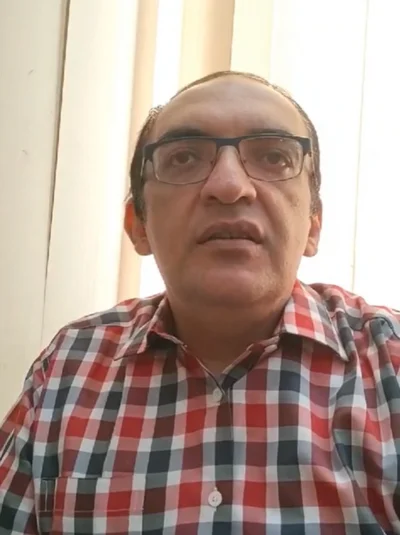Board games have been a popular source of entertainment for centuries, evolving from traditional tabletop formats to the digital age. Today, with the rise of digital platforms and mobile apps, board game development has taken on a new dimension. Whether you’re an aspiring game designer or simply curious about how your favorite board games are made, understanding the basics of board game development is essential. This guide will walk you through the step-by-step process of developing a board game, from concept creation to final production.
Start your Board game development today!
Launch your next big Board game with our expert development team.

Board game development is a fascinating blend of creativity, strategy, and technical know-how. With the growing popularity of tabletop and digital board games, more people are venturing into this space to create their unique games. Whether you are working with a board game development company or doing it on your own, understanding the fundamentals can help ensure that your game is engaging, fun, and marketable.
Many developers also explore board game development services to enhance the design, artwork, and production processes. With the rising demand for board game app development, there are opportunities for both physical and digital board game creators to bring their visions to life.
In this guide, we’ll delve into every aspect of board game development, from idea generation and mechanics to artwork and marketing, giving you a comprehensive view of how to develop a board game from scratch.
1. Generating the Idea
Every great board game begins with a compelling idea. This stage is the foundation of your game and will influence every decision moving forward. When generating ideas for a board game, consider the following:
- Target Audience: Who is your game for? Is it for children, families, or seasoned gamers? Understanding your audience will help you create mechanics and themes that resonate with them.
- Game Theme: The theme of your game can vary from fantasy, history, or science fiction to real-world topics like economics, politics, or agriculture. Choosing a theme that excites you will keep you motivated throughout the development process.
- Game Objectives: What is the ultimate goal of the game? Is it to collect points, conquer territories, or be the last player standing? The objective gives players direction and helps shape the core mechanics of your game.
- Inspiration from Existing Games: It’s essential to play a wide variety of board games to see what works and what doesn’t. Learn from the successes and failures of others, but remember to make your game unique.
2. Defining the Mechanics
Once you have a clear idea of the game’s theme and objectives, the next step is to define the mechanics. Game mechanics are the rules and systems that dictate how the game is played. Some common mechanics in board games include:
- Turn Order: Will players take turns in sequence, or will they act simultaneously?
- Actions: What actions can players take during their turn? For example, moving a piece, drawing cards, or rolling dice.
- Resource Management: Will players need to collect and manage resources like money, points, or goods?
- Victory Conditions: How does a player win the game? Is it based on points, objectives, or the elimination of opponents?
Mechanics should be balanced to ensure that no one player has an unfair advantage. Playtesting (discussed later) will help you fine-tune these mechanics.
3. Prototyping
After defining your game’s mechanics, it’s time to build a prototype. A prototype is a rough version of your game that allows you to see how it plays in real life. This is one of the most crucial steps in board game development because it lets you test your ideas and mechanics before investing time and money into final production.
- Basic Materials: Start with simple materials like paper, cardboard, and markers. You don’t need fancy components at this stage.
- Game Components: These could include cards, dice, tokens, game boards, and player pieces. Create basic versions of these components to use in your prototype.
- Instructions: Write down a clear set of rules for your game. The instructions should explain how to set up the game, how to play, and the victory conditions.

4. Playtesting
Playtesting is where you get feedback on your game. It involves playing the game with friends, family, or potential players to see how it performs in a real-world setting. During playtesting, focus on:
- Game Balance: Are the mechanics working as intended? Is any player at a disadvantage?
- Fun Factor: Is the game engaging and enjoyable? Are players getting bored or confused at any point?
- Clarity of Rules: Are the rules easy to understand, or are players constantly asking for clarifications?
Take detailed notes during playtesting sessions and be open to making changes based on feedback. Remember that the goal is to create a game that’s enjoyable for others, not just for yourself.
5. Refining the Design
After multiple rounds of playtesting, you’ll likely have a long list of things to tweak and improve. This is the refinement stage, where you take all the feedback and make necessary changes to the game. Some things you may want to refine include:
- Mechanics Adjustments: If certain mechanics are too complicated or unbalanced, now is the time to simplify or adjust them.
- Game Length: Ensure that the game doesn’t drag on for too long or end too quickly. Most successful board games strike a balance between these two extremes.
- Player Interaction: Does your game encourage interaction between players? Board games are typically social experiences, so aim to create opportunities for engagement.
6. Creating Artwork and Design
The artwork and design of a board game are critical for making a good first impression. People are often drawn to games with beautiful, thematic artwork. If you’re not an artist, consider hiring a professional or working with a game development company that offers design services.
- Board and Card Design: Ensure that the design is functional as well as visually appealing. Players should be able to easily understand the information on the board and cards.
- Box Design: The box is the first thing players will see, so make sure it’s eye-catching and reflective of the game’s theme.
- Game Components: Pieces such as dice, tokens, and figures should be of high quality and fit well with the overall theme and mechanics of the game.
7. Production and Manufacturing
Once your design is finalized, the next step is to figure out how to manufacture your game. This can be a complex process, especially if you’re new to board game development. You may choose to work with a manufacturer or board game development services to handle production.
- Choosing a Manufacturer: Research different manufacturers to find one that meets your quality and budget requirements.
- Material Selection: Decide on the materials for your game components. High-quality materials will make your game feel more premium, but they also cost more.
- Production Cost: Keep in mind the production cost per unit and how it will impact your pricing strategy.
8. Marketing and Distribution
Once your game is produced, the next challenge is getting it into the hands of players. This is where marketing and distribution come into play.
- Marketing Strategy: Use social media, game conventions, and online platforms to promote your game. A strong marketing campaign can generate buzz and attract potential customers.
- Crowdfunding: Platforms like Kickstarter and Indiegogo are popular for launching board games. Crowdfunding allows you to raise funds for production while also building a community of early supporters.
- Retail and Online Sales: You can distribute your game through online retailers like Amazon or work with local game shops to get your game on their shelves.
9. Board Game App Development
With the increasing popularity of digital gaming, many developers are turning to board game app development as a way to expand their reach. Creating a digital version of your game allows you to reach a broader audience and offer an alternative way to play. If you’re not experienced in app development, consider partnering with a game developer or a board game development company to bring your game to the digital space.
Start your Board game development today!
Launch your next big Board game with our expert development team.

Conclusion
Developing a board game from scratch is a rewarding but challenging endeavor. It requires creativity, strategic thinking, and attention to detail. By following these steps idea generation, defining mechanics, prototyping, playtesting, refining the design, creating artwork, handling production, and marketing you can bring your board game idea to life. Whether you choose to work independently or with a board game development company, the process is an exciting journey from concept to completion.
For those looking to take their game to the next level, game development services can provide additional support in design, production, and marketing. With the right team and approach, even a beginner can develop a successful and engaging board game. Whether you aim for a physical release or a digital one with the help of a board game app development company, the possibilities are endless. So, take the first step….














